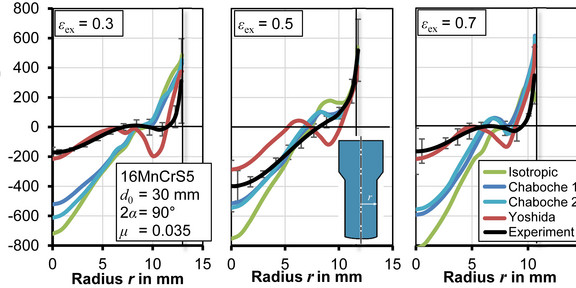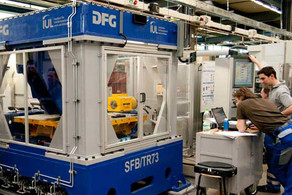Influence of the Multiaxial Bauschinger Effect in Cold Forging
- Massivumformung
- Umformtechnische Grundlagenforschung
- Materialcharakterisierung

| Funding | German Research Foundation (DFG) |
| Project | 418815343 |
| Contact | Felix Kolpak M. Sc. |
In the field of cold forging, multi-staged forming operations are applied frequently to produce complex parts for applications under high loads. In these processes local material regions are oftentimes deformed multiple times, which leads to the manifestation of anisotropic work-hardening phenomena. Therefore, the conventional assumption of isotropic hardening leads to errors in the prediction accuracy of forming simulations, which could not be quantified up to now.
Experimental methods were developed that allow the characterization of anisotropic hardening phenomena up to large strains of ε = 1.6. The methods were applied successfully to three different steels and one aluminium alloy. The utilization of a modified Yoshida-Uemori work hardening model enabled the consideration of all relevant anisotropic hardening phenomena in numerical simulations over the complete relevant strain regime. Consequently, the prediction accuracy of cold forging simulations with regard to process forces and resulting component properties could be increased considerably (see figure).







![[Translate to English:] [Translate to English:]](/storages/iul-mb/_processed_/c/d/csm_Forschung3_2880x640_patrick_961587f317.png)